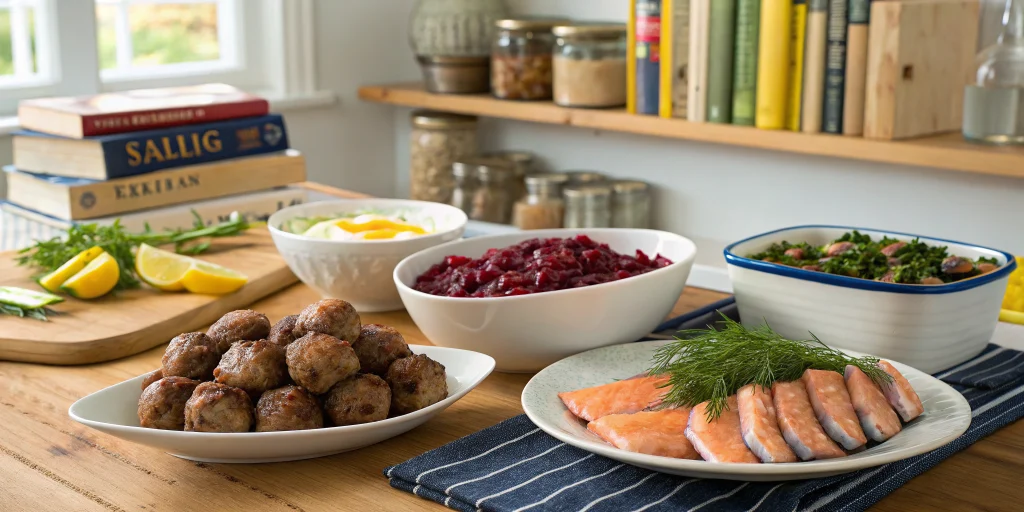Exploring Swedish Cuisine: A Guide for International Students
Table of Contents
- Understanding Swedish Cuisine: A Fusion of Tradition and Modernity
- Classic Swedish Dishes Every International Student Should Try
- Swedish Food Culture and Social Eating Habits
- Practical Tips for International Students Discovering Swedish Cuisine
- How Study in Sweden Supports International Students’ Cultural Integration
- Conclusion: Embrace Swedish Cuisine as Part of Your Study Experience
Understanding Swedish Cuisine: A Fusion of Tradition and Modernity
Swedish cuisine showcases a harmonious balance between hearty traditional meals and progressive international influences. Rooted in centuries-old culinary customs, Swedish food embraces fresh, seasonal, and locally sourced ingredients, reflecting the country’s changing landscapes throughout the year.
Some key features of Swedish cuisine include:
- Seasonal and local focus: Freshness is paramount, with meals varying according to the season, offering international students a taste of Sweden’s diverse natural environment.
- Culinary fusion: While classic dishes dominate, modern influences from global cuisines such as pizza, kebabs, and Chinese food enjoy widespread popularity.
- Balanced flavors: Emphasis on simple yet flavorful dishes combining sweet, savory, and tangy elements, often accompanied by unique condiments like lingonberries.
For university admissions teams and international recruiters, encouraging students to engage with local food culture enhances cultural adaptation and overall student satisfaction.
Classic Swedish Dishes Every International Student Should Try
Swedish cuisine features several iconic dishes that provide a window into the country’s culinary traditions. Below is an overview of staples that international students will likely encounter during their studies.
Smörgåsbord: The Quintessential Swedish Buffet
The smörgåsbord represents Sweden’s most famous culinary tradition, typically served buffet-style and featuring a diverse spread of both hot and cold dishes.
- Typical offerings: Cheese, bread, butter, boiled potatoes, herring varieties, salmon, and Swedish meatballs.
- Special occasions: The julbord, a festive Christmas version, is a highlight during the holiday season, while smörgåsbord-style meals appear at various celebrations year-round.
Köttbullar (Swedish Meatballs)
Perhaps the most globally recognized Swedish dish, köttbullar are smaller, tender meatballs traditionally made from a blend of ground beef, pork, or veal.
- Serving style: Typically accompanied by creamy gravy, boiled potatoes, lingonberry jam, and sometimes pickled cucumbers.
- Cultural significance: This savory-sweet combination appeals to both Swedish locals and international students, making it a comforting introduction to local flavors.
Pickled Herring (Inlagd Sill)
Herring is central to traditional Swedish cuisine, prepared in various forms such as pickled, fermented, smoked, or fried.
- Popular preparation: Pickled herring is frequently included in the smörgåsbord and served alongside crispbread and boiled eggs.
- Adventurous options: Fermented herring offers a pungent experience for the more daring palate.
Gravlax: Dill-Cured Salmon
Gravlax is a delicately cured salmon infused with dill and served with mustard sauce and fresh herbs.
- Holiday favorite: A customary dish during Easter, Midsummer, and Christmas celebrations.
- Flavor profile: Light, fresh, and aromatic, providing a contrast to heavier meat dishes.
Crispbread (Knäckebröd) and Lingonberries
- Knäckebröd: This crisp, flatbread is a staple accompaniment in Swedish meals, versatile enough to be topped with ham, cheese, pickled herring, or smoked salmon.
- Lingonberries: Ubiquitous in Swedish cooking, lingonberries lend tartness to savory dishes, complementing meatballs, potatoes, and pancakes alike.
Other Notable Dishes
- Raggmunk: Potato pancakes served with lingonberry jam and bacon, offering a blend of savory and sweet.
- Kladdkaka: A sticky chocolate cake similar to a gooey brownie, popular among students and celebrated annually on November 7.
- Semlor: Sweet cardamom buns filled with whipped cream and almond paste, enjoyed especially around holiday seasons.
- Swedish Waffles: Thin, heart-shaped waffles served typically with whipped cream and fresh berries, celebrated on Waffle Day (March 25).
These dishes provide diverse taste experiences for students eager to explore Swedish gastronomy.
Swedish Food Culture and Social Eating Habits
Beyond individual dishes, understanding the cultural practices surrounding food enriches the overall experience of living and studying in Sweden.
The Fika Tradition
A core social ritual, fika involves taking a coffee break accompanied by pastries or cakes, fostering both relaxation and social connection. For international students, participating in fika offers an excellent opportunity to build friendships and integrate into Swedish academic and social life.
Embracing Culinary Diversity
Swedish meals often balance traditional fare with modern international cuisines. This openness ensures international students can find familiar dishes while gradually exploring new tastes. University canteens and student unions frequently organize themed food events that showcase Swedish cuisine alongside global flavors.
Practical Tips for International Students Discovering Swedish Cuisine
Navigating a new food culture requires an adventurous and open mindset. Here are actionable tips to help international students enjoy Swedish culinary experiences:
- Be adventurous: Sample both traditional dishes like köttbullar and modern Swedish interpretations. Food is a gateway to understanding local culture and community.
- Attend food events: Many universities and student unions host cultural dinners, food fairs, and cooking workshops. These settings are ideal for socializing and cultural immersion.
- Shop locally: Visit supermarkets and local markets to find fresh Scandinavian ingredients, enabling students to experiment with Swedish recipes at home.
- Participate in fika: Embrace the social tradition of fika to make connections and enjoy relaxed moments with peers.
- Seek guidance: Utilize resources provided by institutions and platforms like Study in Sweden, which offers insights into student life beyond academics, including cultural and lifestyle tips.
How Study in Sweden Supports International Students’ Cultural Integration
As the leading platform facilitating international study in Sweden, Study in Sweden offers extensive resources and support that go beyond academic guidance. Recognizing the importance of cultural integration, Study in Sweden:
- Provides university admissions teams and international student recruiters with tailored tools and information to prepare students for life in Sweden, including culinary and cultural orientation.
- Offers advice and content on lifestyle, including Swedish food culture, helping students make informed choices that enhance their study abroad experience.
- Supports HR and marketing professionals in education by sharing insights on student preferences, aiding in the design of inclusive programs that address diverse cultural backgrounds.
- Collaborates across the education sector to develop engaging recruitment and onboarding solutions that incorporate local culture familiarity, including gastronomy.
Through these efforts, Study in Sweden ensures international students feel welcomed, comfortable, and connected throughout their educational journey.
Conclusion: Embrace Swedish Cuisine as Part of Your Study Experience
For international students, exploring Swedish cuisine is an enriching aspect of studying in Sweden. From iconic dishes like smörgåsbord and köttbullar to beloved social traditions such as fika, food serves as a bridge between cultures and communities.
Educational institutions, international recruiters, and agencies involved in student placement can leverage culinary experiences to foster student engagement, wellbeing, and successful integration.
Take the Next Step with Study in Sweden
Ready to enhance your student recruitment strategy and support international student success in Sweden? Partner with Study in Sweden to access expert knowledge, data-driven insights, and innovative tools designed to optimize international recruitment and student onboarding.

